Dutch Government’s Preliminary Report on the Crash of flight MH17 is a Whitewash
Western mainstream media whores are already jumping all over a single sentence in the Preliminary report [on the] Crash involving Malaysia Airlines Boeing 777-200 flight MH17, that reads:
“Damage observed on the forward fuselage and cockpit section of the aircraft appears to indicate that there were impacts from a large number of high-energy objects from outside the aircraft.”
According to paragons of bullshit like the BBC, this “pretty much rules out anything else other than a [BUK] missile”.
What the BBC and just about every other mouthpiece of Western anti-Russian propaganda are studiously ignoring is the evidence provided by Russia, which was corroborated by eyewitnesses, that fighter jets were in close approach to MH17 when it went down. And in case everyone forgot, high caliber bullets are also “high-energy objects”.
With any crime, the context in which it occurs is important. The crash of MH17 and the death of all 298 people on board occurred in the context of a major ongoing propaganda war against Russia by Western governments that was launched in the aftermath of a US-sponsored coup in Ukraine bringing an anti-Russian government to power. This provoked Russia to facilitate the incorporation of Crimea into the Russian Federation and support the armed separatist movement in Eastern Ukraine. In short, the downing of MH17 occurred in the context of a major ‘world war’ between Russia and Western powers.
The preliminary report itself is very short on details. As regards MH17’s flight plan, the report begins its analysis of communications between Air Traffic Control and the plane only with the Dnipro ATC. MH17 had been previously corresponding with Kiev ATC over Ukraine, yet these communications are not included in the analysis.
The first communication with Dnipro ATC cited by the report occurred at 12.53, with Dnipro ATC asking MH17 to move to 35,000 ft “to clear a potential separation conflict with other traffic in the area”. The report simply states that the crew “replied they were unable to comply and requested to maintain at 33,000 ft”. This seems strange given that the flight crew of a commercial plane are not in a position to take decisions on the locations of other planes in relation to their own and other potential obstacles. That is, after all, the job of ATC. Yet the report glosses over this fact and also the question of why MH17 was flying at 33,000 ft to begin with. While the report states that “According to the flight plan [determined by Malaysia Airlines and “approved by all involved air traffic control centres for their concerned regions], flight MH17 would initially fly at Flight Level 330 [33,000 ft]”, according to several Malaysian newspapers, Malaysian Airlines previously stated that:
MH17 filed a flight plan requesting to fly at 35,000 ft throughout Ukrainian airspace. This is close to the ‘optimum’ altitude.
However, an aircraft’s altitude in flight is determined by air traffic control on the ground. Upon entering Ukrainian airspace, MH17 was instructed by Ukrainian air traffic control to fly at 33,000ft.
Strangely, this statement by Malaysian Airlines appears to never have been reported by Western media.
Why, immediately on entering Ukrainian airspace, did Kiev, or some other Ukrainian ATC (but NOT Eastern Ukrainian ATC), instruct MH17 to fly at 33,000 ft instead of the usual 35,000 ft? This clearly caused a problem for the plane over Eastern Ukraine when Dnipro ATC had to ask MH17 to move up to 35,000 ft.
Why does the preliminary report simply state that “the crew stated that they were unable to comply”? Why were they unable to comply? Why were the full Ukraine ATC-MH17 recordings (i.e. those recorded by Ukrainian ATC) not included in the report? Are claims by media sources, including the BBC, that they were confiscated by Ukrainian security services true? Were they also handed to US analysts in Kiev as has been claimed?
Why was MH17 flying further north than usual, putting it over the ‘rebel’ held area of Eastern Ukraine rather than its normal route of further south over the Sea of Azov? Was this also on the orders of Kiev ATC?
So many unanswered questions!
Interestingly, about 6 weeks before MH17 crashed, there was a change of guard at the Ukrainian State Air Traffic Services Enterprise (UkSATSE) offices, with its director, Yurii Cherednychenko, being unceremoniously kicked out and “temporarily” replaced by the former director, Serhii Zdorovets.
As for the Cockpit Voice Recorder and the Flight Data Recorder, the report stated:
No evidence or indications of manipulation of the recorders were found.
No aural alerts or warnings of aircraft system malfunctions were heard on the Cockpit Voice Recorder.
The communication between the flight crew members gave no indication of any malfunction or emergency prior to the occurrence.
The engine parameters were consistent with normal operation during the flight. No engine or aircraft system warnings or cautions were detected.
No technical malfunctions or warnings in relation to the event flight were found on Flight Data Recorder data.
Both recordings ended at 13.20:03.
On this point, the Malaysian New Straits Times quoted Malaysian investigators:
“At the very least it [the CVR] would have been able to pick up the sound impact of a missile blast. At the most, the sounds of the flight crew reacting to a massive explosive decompression”
A high-ranking Department of Civil Aviation official also questioned AAIB’s findings:
“It’s a bit mind-boggling that there was ‘nothing out of the ordinary’ recorded throughout the entire playback of the CVR. There is a possibility that power was immediately cut, but there are multiple redundancies in the aircraft. The black boxes rely on a different electrical source. The final few minutes should have been recorded before the aircraft disintegrated.”
Indeed. I can think of two possible reasons why data from the CVR has not been forthcoming. British authorities who analyzed the black boxes are withholding the data, or…the pilots of MH17 didn’t have time to record anything, or maybe both are true.
Explaining the holes
The Preliminary Report states that MH17 broke apart in the air with the wreckage spread over a 10 km x 5 km area. The front and cockpit sections were particularly badly hit with those “high energy objects” above the level of the cockpit floor and hit the ground closest to where the last CVR (Cockpit Voice Recorder) message was received, suggesting that the cockpit area broke off first. One part of the roof of the cockpit however was found 1.7 km north of where another section of the cockpit was found. The mid and rear sections of the plane were found a further 6 km from the location of the front section.
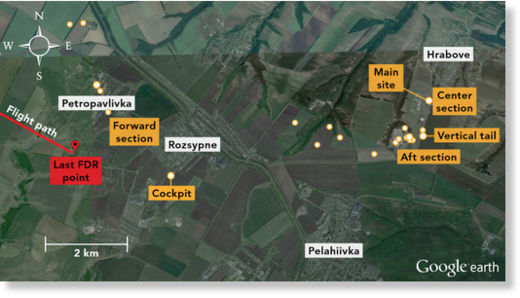
There has been much debate about the nature of the holes found in the fuselage of MH17. Photos of several pieces of the exterior of the cockpit show what appear to be both entry and “exit holes”. See below.
Photographs also show holes in the interior roof and floor of the cockpit.
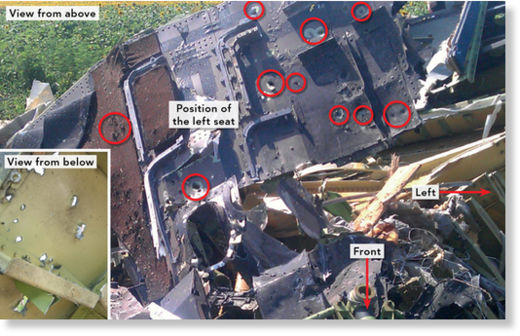
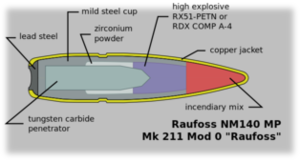
HEIAP munitions use high explosives to blast a path for the solid ‘penetrator’, often made of tungsten carbide, that follows. The initial collision ignites the incendiary material in the tip, triggering the detonation of the HE charge.
The detonation of a HEIAP bullet depends on the resistance of the material that it hits. If the material offers little resistance then the lack of frictional heating will prevent the incendiary from igniting and the high explosive from detonating. HEIAP rounds are well suited for penetrating lightly armored targets and causing damage to personnel inside the target after penetration. They are suitable for engaging helicopters, aircraft and lightly armored vehicles, as well as unarmored vehicles, and are capable of igniting jet fuel.
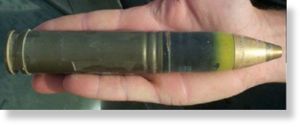
The image below shows a piece of MH17 wreckage as it fits with the cockpit area of the plane directly below the window, i.e. precisely where the pilot was sitting.
Below is an example of the damage, including mini-shrapnel damage, to a car door from a HEIAP round, likely 30 mm.
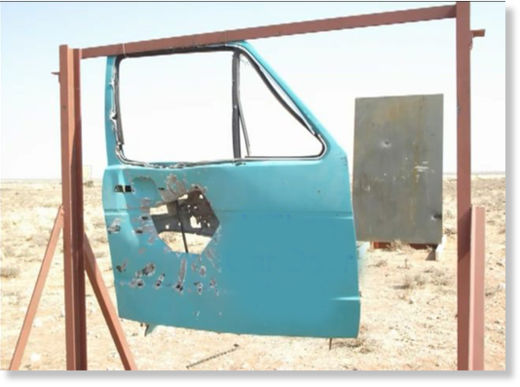
Whatever the precise nature of the attack that led to the destruction of MH17, it seems clear that, deliberately or accidentally, the flight crew of MH17 were suddenly and completely ‘taken out’.
BUK-M1 Unlikely
There are two reasons that it is unlikely that a Buk-M1 anti-aircraft missile was used to destroy MH17.
2) As I have mentioned elsewhere, a Buk missile leaves a distinctive white trail that lingers in the air for several minutes and can be seen over a wide area. There have been no reports of any such missile trail being observed at the time, despite the fact that there were eyewitnesses who observed MH17 as it came down.
Just one day before the release of the preliminary report, the BBC, quite coincidentally I’m sure, announced that “three eyewitnesses, all civilians, separately told Panorama that they saw a missile-launcher in rebel-held territory a few hours before the Boeing jet was hit.”
One of the BBC’s ‘eyewitnesses’ said that he “saw the missile-launcher roll off a low-loader at Snezhnoye, around ten miles from the crash site, at around 13:30 local time”. The eyewitness told the BBC that the crew struck him as Russian soldiers: “Well-disciplined, unlike the rebels, and not wearing the standard Ukrainian camouflage uniform sported by government and rebel troops alike. They had pure Russian accents. They say the letter ‘g’ differently to us,” he said.
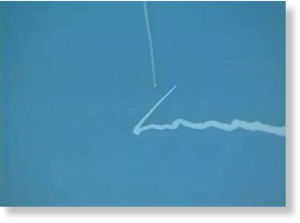
Then there are the two analyses (one by French aviation expert General Jean du Verdier, the other by a contributor to Vineyard of the Saker), which show that if a Buk missile were used, it would have to be fired from west of the crash site to be within range. Snezhnoye is southeast of the crash site.
As I mentioned at the beginning of this article, context is very important in criminal investigations. So is ‘past form’.
The idea that the US government (or some section thereof) would stage a well-planned and equally well covered-up provocation as part of an information war against an enemy should surprise no one. During the ‘cold war’, the Department of Defense and the Joint Chiefs of Staff of the United States government tabled a series of proposals which called for the Central Intelligence Agency, or other operatives, to make it appear that Cuba had attacked a member of the Organization of American States (OAS) so that the United States could retaliate. One suggestion was that “a contrived ‘Cuban’ attack on an OAS member could be set up, and the attacked state could be urged to take measures of self-defense and request assistance from the U.S. and OAS.”
The documents state that:
… the use of MIG type aircraft by US pilots could provide additional provocation. Harassment of civil air, attacks on surface shipping and destruction of US military drone aircraft by MIG type planes would be useful as complementary actions. Reasonable copies of the MIG could be produced from US resources in about three months.
And
It is possible to create an incident which will demonstrate convincingly that a Cuban aircraft has attacked and shot down a chartered civil airliner enroute from the United States. The destination would be chosen only to cause the flight plan to cross Cuba. The passengers could be a group of college students off on a holiday.
On a related note: here’s a photograph of the main crash site of MH17 where most of the body of MH17 hit the ground. It provides a good example of what you can expect to see when a commercial airliner crashes:
The ground is pretty hard. Not quite as hard, perhaps, as the steel reinforced concrete facade of the Pentagon, but pretty hard nonetheless. Almost 6 months after its disappearance, many people are still asking ‘where is Malaysian flight MH370?’ Thirteen years later to the day, some of us are still wondering, ‘where is American Airlines flight 77?’

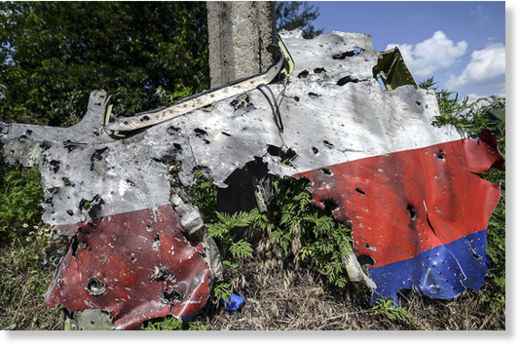
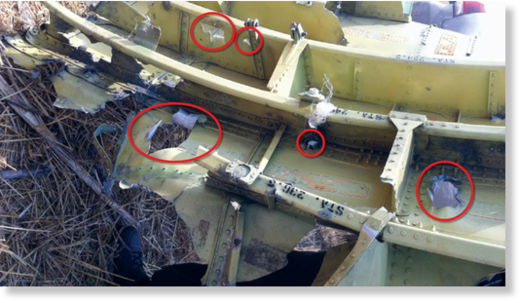
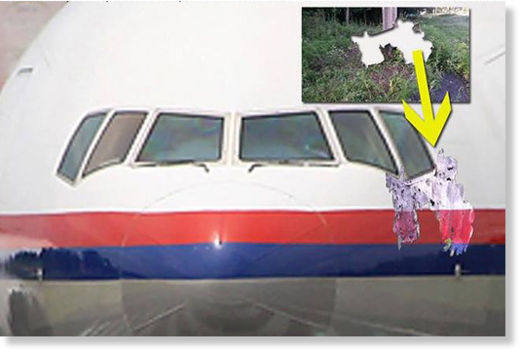
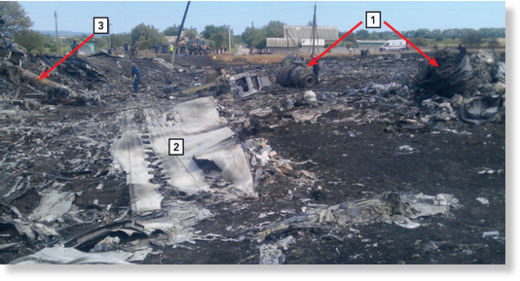
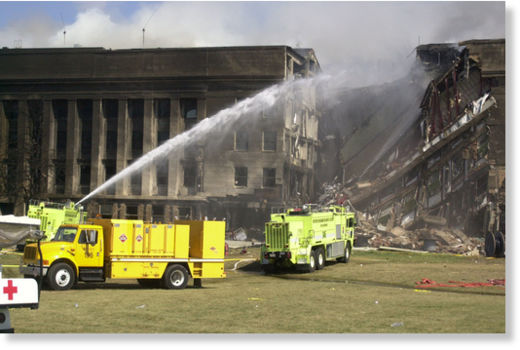
Not "whitewash": Stonewall.